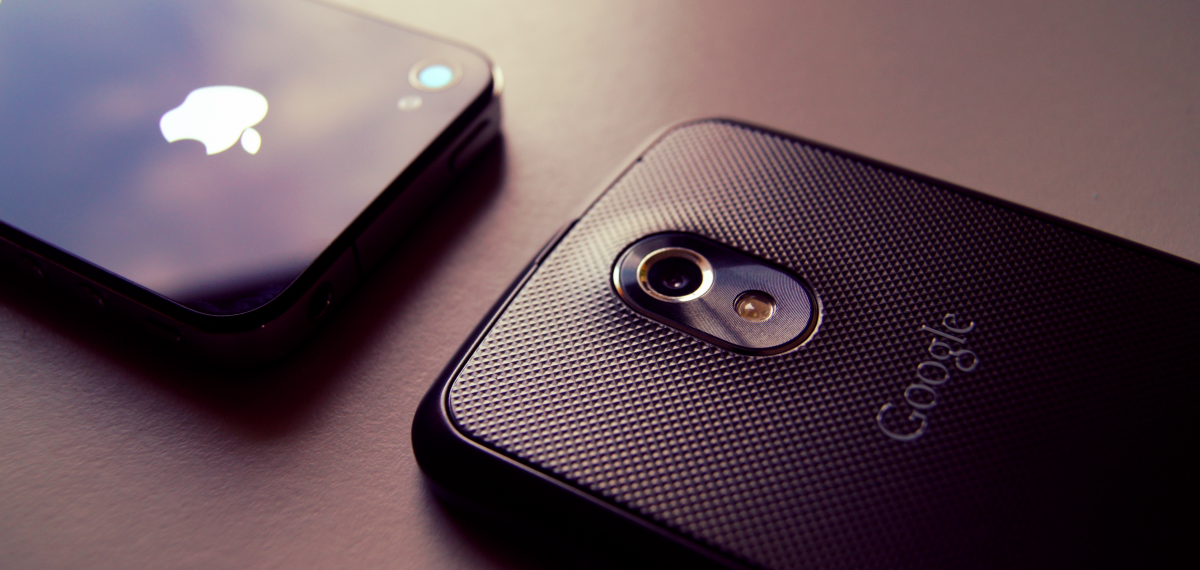iPhone 6 and iOS 8 against Android

iPhone 6 and iOS 8 against Android
Although many details have filtered before the long-awaited Apple conference last 09/09/2014 in Cupertino (USA), the crowd, the fans and streamers were still delighted. With two new iPhones, a much desired Apple Watch and promising new features, novelties brought by the technology giant foreshadow powerful revolutions in smartphone usage (and in the usage of your future watches too).
iOS 8 will run your iPhone and will connect your watch to it. It will record and interpret your heart beat, facilitate the process of sharing content with your nearest and dearest, and even store your credit card information. iOS 8 will allow you to live even faster, harder and better with your smartphone.
But is this not already the case with some of the Android phones?
How to interpret iPhones 6’ value against Android’s?
In 2014, it only took Tim Cook 8 minutes to announce the iPhone 6. The new iPhone is faster, comes in both a smartphone size (4.7’’) and phablet size (5.5’’), and offers a new design, a better camera and an exceptional image quality. Some see this as a revolution, others as a logical continuance of Apple’s efforts.
Being less of an exclusivity than in previous years, the new iPhone 6 and 6 + share some resemblances with Android devices. For instance, Google’s Nexus ranges already proposed 4.7’’ screens, while Samsung’s Note range had already created a phone with a 5.5’’ screen.
Apple is adjusting.
It is also worth noticing that Apple hasn’t changed its business strategy. The new devices range from $649.00 for a 16GB iPhone 6, all the way to $949.00 for a 128GB iPhone 6 Plus. As expected, the prices of the “older” models have decreased by between $100 and $200.
Ultimately, it’s a direct competition for “Premium” Android phones.
Apple now accounts for 10% of worldwide mobile phone sales, with an average sale price of $550-600, whereas Android accounts for 50% of mobile phone sales, with an average sale price ranging between $250 and $300. In other words, whilst Apple represents half the market for “premium” phones, Android simply represents the other half.
Undeniably, this other half represented by Android is largely dominated by Samsung.
Questions thus arise.
Why buy Apple instead of Android? The two have similar characteristics (NFC, health measurements, large screens, etc.) and Samsung has even already acquired a share of the digital watch market.
With iOS 8, Apple has done its best to try and annihilate all the good reasons to turn towards Android’s side (especially with the upcoming release of Google’s Nexus 6 which could present an impending danger for Apple given the constant growth of the Android ecosystem).
In addition, iPhone 6 Plus is a tangible tackle to the phablet market (devices between smartphones and tablets). Although the phablet size doesn’t captivate European or American mobile users, it generates a lot of interest in East Asia. Therefore iPhone 6 Plus could become a substitute to some of the Samsung phones for example (i.e. Galaxy Note), in particular in phablet competitive markets such as China, Japan and Korea.
Apple represents only ¼ of smartphone users, but engenders ¾ of the generated value.
In the last 12 months, Apple paid iOS developers over 10 billion dollars. Google on the other hand, has given 5 billion to those developing the Google Play Store.
Google also recently reported that their user base was assessed at 1 billion users. Contrariwise, Apple has an estimate of between 550 and 650 million active devices. This implies that Apple is able to generate twice Google’s revenue from mobile application, with only just over a half of its amount of users.
However, it is worth discerning that Android users may be spend less on applications as the average purchase price of an Android phone is lower than the one of an iPhone. Nevertheless, if one focuses only on the analysis of Android’s “premium” segment against Apple, values are equivalent.
The battle between Google and Apple, and their two respective operating systems, isn’t expected to end any time soon. Will we see in the next few years a significant conversion of Android users to the iPhone 6 and 6 Plus? Perhaps we will simply observe a consolidation of Android’s “premium” market, which already offers everything that Apple presents (apart from quality partnerships with companies such as American Express, Visa, McDonald’s, Disney, and so on.).
In the end, the Apple’s strength will remain in its ability to trigger new uses in conducts; uses that are made possible through a novel combination brought by the new iOS 8, iPhone, Apple Watch, and the whole reinforced by powerful partnerships. Some even say that Apple’s strength lies in its ability to adapt its technology to the trends of the fashion world (especially when it comes to the Apple Watch).
The Apple vs. Google debate is open, and although Apple is currently in the spot light, it is also time to pay attention to rumours revolving around Google’s Nexus 6, which is undoubtedly the biggest Android danger for Apple.
« Game on ».



